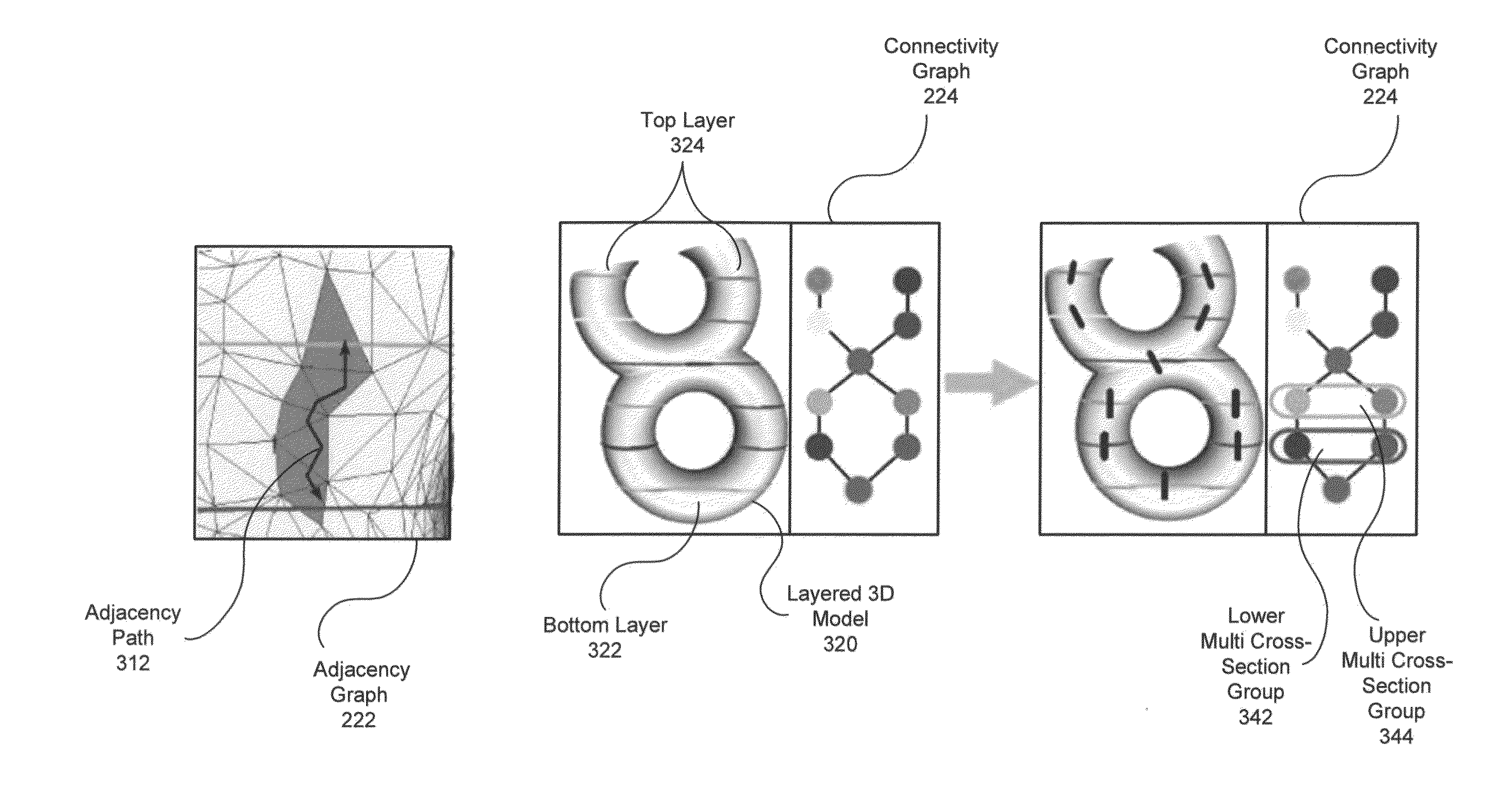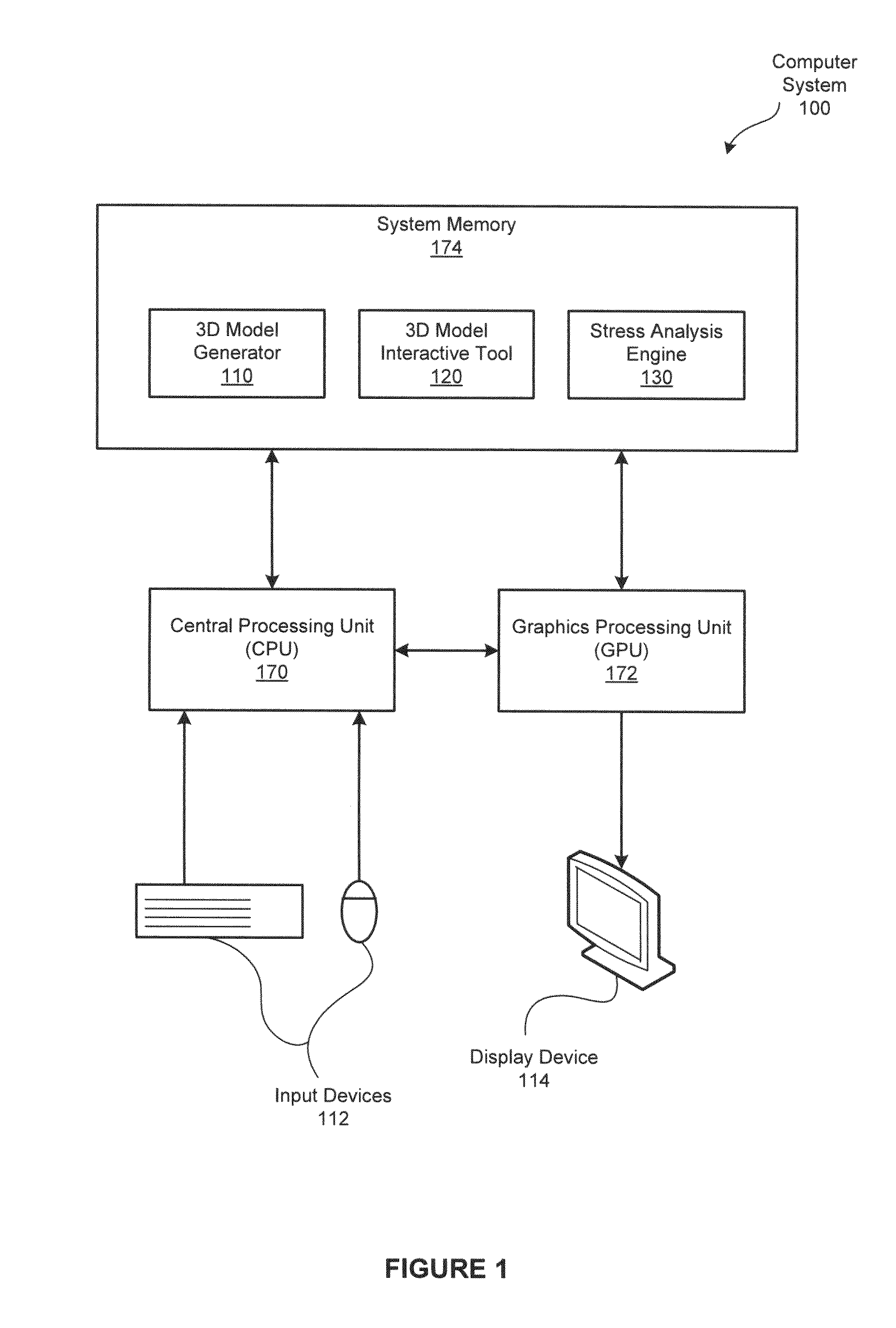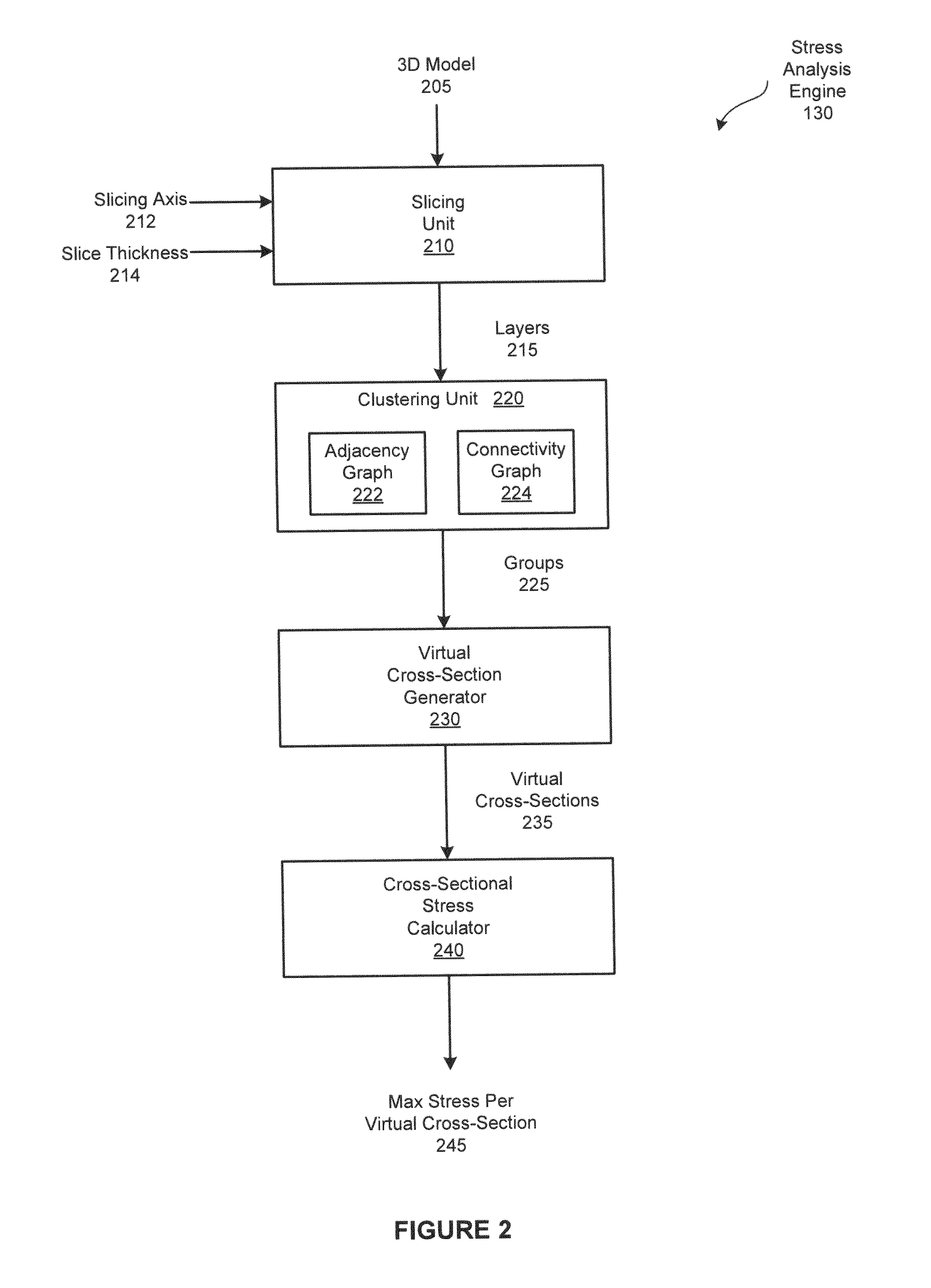Techniques for performing cross-sectional stress analysis for three-dimensional objects
a stress analysis and three-dimensional object technology, applied in the field of computer science, can solve the problems of novice users often creating 3d objects that are fragile and prone to breakage, conventional modeling tools typically do not include user-friendly structural stress analysis real-time interfaces, and achieve automatic and efficient detection of critical stress, reduce guesswork and/or over engineering, and facilitate trial-and-error design processes
- Summary
- Abstract
- Description
- Claims
- Application Information
AI Technical Summary
Benefits of technology
Problems solved by technology
Method used
Image
Examples
Embodiment Construction
[0018]In the following description, numerous specific details are set forth to provide a more thorough understanding of the present invention. However, it will be apparent to one of skill in the art that the present invention may be practiced without one or more of these specific details.
System Overview
[0019]FIG. 1 is a block diagram illustrating a computer system 100 configured to implement one or more aspects of the present invention. As shown, the computer system 100 includes, without limitation, a central processing unit (CPU) 170, a system memory 174, a graphics processing unit (GPU) 172, input devices 112, and a display device 114.
[0020]The CPU 170 receives input user information from the input devices 112, such as a keyboard or a mouse. In operation, the CPU 170 is the master processor of the computer system 100, controlling and coordinating operations of other system components. In particular, the CPU 170 issues commands that control the operation of the GPU 172. The GPU 172...
PUM
| Property | Measurement | Unit |
|---|---|---|
| structural stress analysis | aaaaa | aaaaa |
| structural stress | aaaaa | aaaaa |
| bending moment equilibrium | aaaaa | aaaaa |
Abstract
Description
Claims
Application Information
 Login to View More
Login to View More - R&D
- Intellectual Property
- Life Sciences
- Materials
- Tech Scout
- Unparalleled Data Quality
- Higher Quality Content
- 60% Fewer Hallucinations
Browse by: Latest US Patents, China's latest patents, Technical Efficacy Thesaurus, Application Domain, Technology Topic, Popular Technical Reports.
© 2025 PatSnap. All rights reserved.Legal|Privacy policy|Modern Slavery Act Transparency Statement|Sitemap|About US| Contact US: help@patsnap.com



